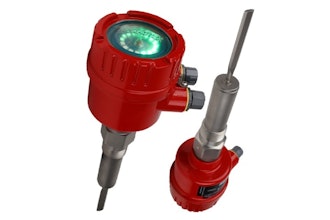Every organization that launches a lean initiative must ultimately find ways to sustain it over time.
As is too often the case, after the easy gains have been achieved and performance begins to level out, business unit leaders and managers at many companies become disillusioned and turn
their attention elsewhere. But this is exactly the time in a business transformation when direct leadership engagement is essential to keep moving forward.
Although there is no sure-fire way to maintain momentum from year to year, there are some specific actions and behaviors that business leaders can take to maintain the vitality of a lean program so that it continues to deliver long-term results. Sustaining a strong lean program beyond the first two or three years requires:
- Widespread communication of current performance and metrics,
- Continually finding new ways to keep employees motivated,
- Ongoing employee training and learning, and
- Direct involvement by organization leaders in lean efforts.
This TBM lean management briefing will review some of the practices and the specific actions that business leaders and managers at all levels can take to demonstrate the organization is committed to the lean philosophy, and thereby reap the operational advantages and long-term financial benefits.
Leadership Behavior and Actions to Sustain Lean
From the CEO to unit leaders to plant managers and supervisors, business leaders at all levels play a critical role in sustaining a lean program. Here are some of the specific tactics, practices, and behaviors that they can deploy to keep employees and teams motivated, and the organization moving forward.
1. Communicate the Vision: Company leaders need to provide regular and consistent communication with employees about the specific returns that the company is gaining from its lean initiative, and what’s in it for them. Employees need to understand how lean impacts the company’s overall competitiveness, financial performance and, ultimately, job security.
2. Always Update Standard Work:Standardized work reinforced with visual work instructions based on the kaizen-improved processes can help ensure employees adhere to the correct work procedures. Such standards guard against back-sliding to the old ways of working. Of course leadership must also communicate that standard work processes are always open to modification during future kaizen events.
3. Go on Gemba Walks: Going to the gemba, walking around the plant and asking employees, “What did you do this week to make continuous improvement happen?” That’s one of the most powerful questions a leader can ask. When business leaders keep asking such questions, employees soon learn what’s important and what they need to be working on. It’s important, though, to differentiate between gemba walks and plant walks, or “board” walks. Board walks involve reviewing the plant’s performance (SQDC) boards to ensure that each area is meeting targets, and providing support for corrections when needed. A gemba walk typically involves an executive or other top-level manager observing select processes and functions, such as material flow, with the goal of helping plant leaders and other continuous-improvement personnel see potential and high-priority areas for improvement.
4. Build a Continuous Improvement Culture: True lean leadership encourages continuous improvement even when the improvement ideas don’t meet expectations. By making it acceptable to try something even if it fails, leaders empower workers to assume responsibility for solving their own problems. It’s important to demonstrate that observing processes, challenging current practices, and engaging in improvement activities are all part of a comprehensive problem-solving approach that will improve the business.
5. Foster a Respectful, Team-Driven Organization: Teamwork is an essential element of any lean initiative because it requires employees from different departments to work together to improve processes that almost always cross functional boundaries. Encouraging groups to contribute their ideas and responding to their suggestions is one way that teamwork demonstrates respect. Engendering respect and mutual trust is a critical element of any lean initiative. Yet leaders often overlook it because they focus all attention on process improvement. In a lean business, one way to demonstrate such respect is by actively encouraging every employee to be deeply engaged in the work that he or she does for customers and the company.
6. Continue to Motivate Employees: Employee enthusiasm for any initiative naturally will wane over time. Full participation in a continuous-improvement program goes far beyond normal job descriptions and the scope of most employee compensation programs. This is where leaders personally participating in the continuous-improvement process can demonstrate the organization’s commitment. They can participate in kaizen events and be part of the problem-solving process. Leaders can motivate individuals by increasing their autonomy and encouraging them to find ways to permanently improve their work.
7. Maintain Regular Training: Another way to sustain lean is through non-stop training of all employees, including supervisors, in the redesigned and improved work processes. Cross-training employees is also critical. Employees who have been trained in all the primary work processes tend to exhibit a more proprietary attitude toward improving their own work processes and offering ideas to improve other processes as well.For instance, Menlo Worldwide Logistics in San Mateo, Calif., a large warehouse and distribution firm, rotates its kaizen teams to examine the work flows in other departments. Groups of employees visit other work areas, inspect the process, and then discuss their ideas and findings to the area’s supervisor.
8. Reinforce Performance and Progress with Metrics and Visual-Management Tools: Another way to show employees how their efforts are advancing the company's lean efforts is through the use of visual-management tools and constantly updated metrics. Tracking and reporting performance metrics help sustain the organization's commitment to the lean at both the leadership and on the plant floor.
For example, measuring takt time is one way to ensure employees are following procedures and standard work. Supervisors and work cells should report takt time hourly, and post hour-by-hour charts for employees to see hwo performance is measuring up against goals. If performance is off, the team can see it and figure out what needs to be done to get back on track.
9. Post Continuous-Improvement Scorecards: Tracking progress on a month-to-month basis reinforces accountability and gives leadership an opportunity to check on results. At Menol Worldwide, for example, each warehouse is evaluated based on projects completed that month and planned projects in the coming month. Each facility posts a monthly "continous-improvement roadmap," known within Menlo as a "30-30" form. The April/May 30-30 may contain a half-dozen or more initiatives completed in April, along with a similar number of projects scheduled for May. These forms report project status and detail teh time trimmed from each process and the annual savings.
Whether it's a week-long kaizen event or a six-month project, too many co mpanies make improvements that produce significantly early results, and then they walk away to work on the next thing. To use a medical metaphor, just because the operation is a success doesn't mean the treatment is complete. The doctor still needs to monitor the patient through a post-operative recovery and follow up with physical therapy.
Long-term success with lean works much the same way. Business improvement leaders need to follow up to make sure new behavior patterns are consistent with the new methodology. This includes a commitment by executives to remain engaged in teh lean process by going to the gemba and participating in kaizen events. Such management behavior and actions are part of a sucessful company's overall effort to regularly communicate the impact lean has on financial targets and how the employee's contributions impact them.
About the Authors
Joe Panebianco is director and client manager at TBM Consulting Group. Mike Noonan is senior trainer and design specialist at TBM.






















